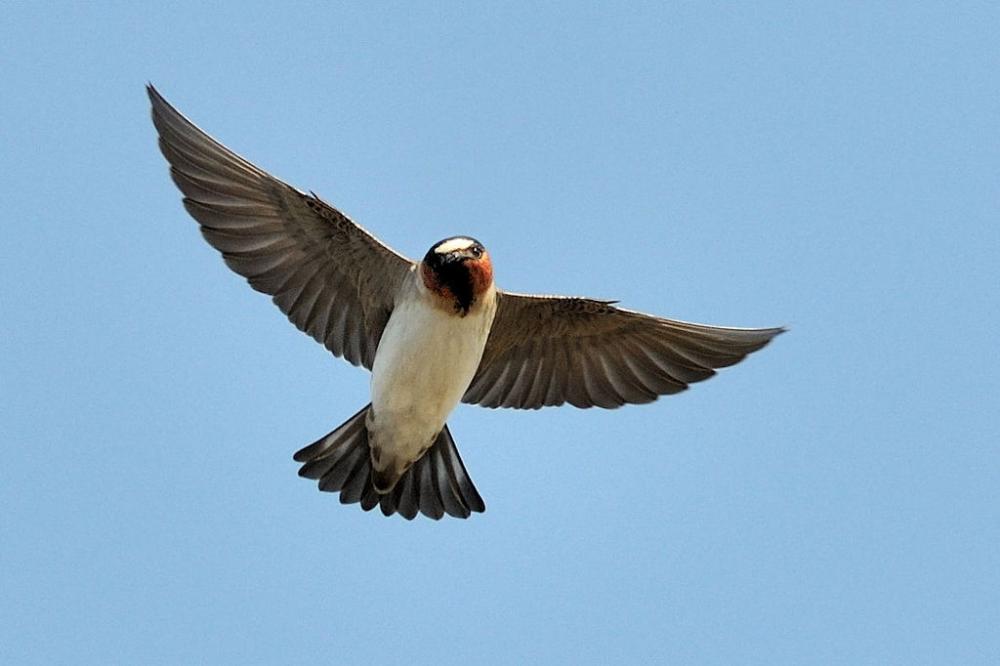Guide to Boreal Birds
Overview
As its name implies, this swallow originally nested on cliffs. The introduction of House Sparrows was a disaster for these birds, since the sparrows usurp their nests and often cause the swallows to abandon a colony. Long, cold, rainy spells while the young are in the nest also cause widespread mortality since the adults are unable to obtain enough insects. In California they often return in early spring to ancestral colonial breeding sites. If it turns chilly, however, they will abandon the area until weather and feeding patterns are more favorable, and return "on schedule" for their publicized arrival on March 19 at Mission San Juan Capistrano.
Description
5-6" (13-15 cm). Sparrow-sized. A stocky, square-tailed swallow with pale buff rump. Upperparts dull steel-blue; underparts buff-white; throat dark chestnut; forehead white. Southwestern birds have chestnut foreheads. Cave Swallow of Texas and Southwest is similar but smaller, with darker rump and pale buff throat.
Voice
Constant squeaky chattering and twittering.
Nesting
4-6 white eggs in a gourd-shaped structure of mud lined with feathers and placed on a sheltered cliff face or under eaves. Nests in colonies.
Habitat
Open country near buildings or cliffs; lakeshores and marshes on migration.
Range/Migration
The relatively leisurely migration of these swallows begins in early February, when they begin passing along the eastern slopes of the Andes. They follow the Gulf coast into northern Mexico and then split into two groups. Western populations move rapidly up the Pacific coast, while eastern birds push into the Mississippi River valley and northward. There is some evidence that individuals that nest together in North American colonies remain together while leading a primarily nomadic existence in South America.
This is the famed swallow of Mission San Juan Capistrano, reputed to arrive each year on exactly March 19 (St. Joseph's Day). The birds actually reach southern California much earlier than that in most years. It is also interesting to note that in artistic depictions of the swallow's return to this historic mission, the pictures often depict Barn Swallows, which possess long forked tails that are more aesthetically pleasing than the short gray tails of Cliff Swallows.
Breeds from Alaska, Ontario, and Nova Scotia southward through most of United States except Southeast. Winters in tropics.



